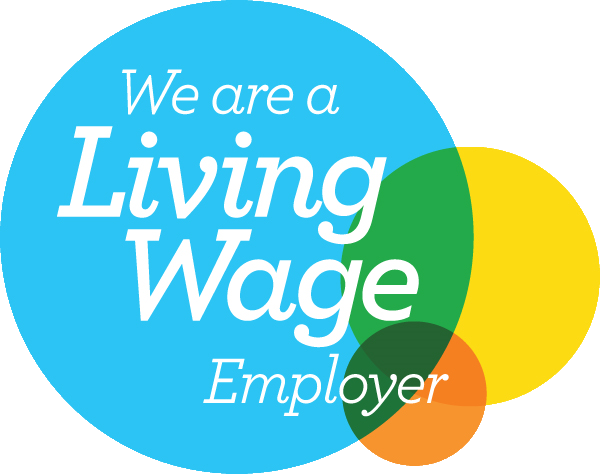Our Journey Towards a Sustainable Future
2024 marks 10 years of trading for Strillobyte. As we continue to work on our business growth, we are also starting to formalize our commitment to become a truly sustainable tech agency. We believe in the power of businesses, no matter how small, to affect positive change in our world. Our current objective is to achieve B Corp status. This report, which outlines our efforts to measure and mitigate greenhouse gas (GHG) emissions across our operations, represents one of several steps that we are taking towards that goal.
The Greenhouse Gas Protocol
The Greenhouse Gas Protocol (GHG) is the world’s most widely used greenhouse gas accounting standard, which classifies emissions into three scopes for comprehensive management and reporting.
Scope 1 emissions are direct emissions from owned or controlled sources, including fuel combustion and company-owned vehicles.
Scope 2 emissions cover indirect emissions from the generation of purchased electricity, steam, heating, and cooling consumed by the company.
Scope 3 emissions, often the most challenging to quantify, include all other indirect emissions that occur in our value chain, such as those associated with business travel, procurement, waste, and employee commuting.
By categorising our emissions into these scopes, we can effectively identify significant areas of impact and opportunities for reduction, aligning our operational practices with our sustainability objectives.
Our Environmental Impact
Scope 1 Emissions: Direct Emissions
We don’t run any manufacturing operations or own company vehicles; therefore, we don’t produce any Scope 1 emissions.
Scope 2 Emissions: Indirect Energy Emissions
Our only Scope 2 (indirect) emissions would be from energy used to heat and power our workspace. However, we operate from a coworking space and fully support remote work, therefore we do not directly purchase electricity.
Scope 3 Emissions: Value Chain Emissions
Scope 3 make up 100% of our current emissions. The following chart shows our calculated values for 2023 allocated to the relevant categories.
Total Emissions (kgCO2e)
Data Collection and Methodology
Most of the emission data has been collected through reports produced by each relevant vendor (e.g. Microsoft & Google) or calculated by referring to publicly available data. The following sections describe the data and methods used for each category.
Employee Commuting
We estimated the overall kilometres travelled by our employees when commuting to work, then calculated their emissions based on the different means of transports used by each.
Public Transport
The current emissions of a journey on the London underground are calculated as 40.5 gCO2e per passenger per km, while London buses generate 98.6 gCO2e per passenger per km [1].
ICE (Internal Combustion Engine) Vehicles
Fuel efficiencies can vary widely between vehicles. However, it is reasonable to assume an average of 15 kilometers per liter under typical conditions. The CO2 emissions factor for a petrol engine is typically about 2.3 kgCO2 per litre. This factor accounts for the direct emissions from burning petrol. It is also important to note that ICE vehicles also emit other GHGs like methane (CH4) and nitrous oxide (N2O), though in much smaller quantities than CO2.
Business Travel
We estimated the overall kilometres travelled by our employees on business-related trips, then calculated their emissions based on the different means of transports used by each.
Flights
Carbon emissions are normally calculated by the operating airlines during the booking process. However, as this information was not captured at the time, we used an online tool to estimate the emissions for each flight that we purchased in 2023 [2].
Trains
For trips on the Eurostar, we used the suggested route emission values from Eurostar [3]. For trips on other train lines such as GWR we recorded this information directly at the time of booking.
Fuel and Energy Related Activities
Our electricity consumption comes primarily from utilising laptops and monitors at our desks. We also support remote work but since we don’t have access to exact figures for our team’s household energy consumption, we have decided to consider everyone as working from the office full-time. This should yield a higher emission value for the company, but we’d rather calculate in excess than in defect.
With regards to electricity usage in the office, we have recently installed smart plugs that allow us to measure exactly how many kWh we are drawing from the grid. We have taken a daily average of these values and multiplied it by the latest known value of gas emissions per kWh in the UK [4].
Upstream Leased Assets
Emissions generated by our usage of our coworking space (heating, cooling, lighting etc..) fall under this category. As we don’t have direct access to the utility bills for the office, we have decided to work out a rough estimate based on the building’s EPC report and the size of the space occupied by our team.
Purchased Goods and Services
A lot of our emissions come from tools and materials that we use in our daily work. The emissions calculated in this category are those for which we could retrieve accurate data directly from the providers (i.e. printed materials, Microsoft [5] and Google [6]). However, we also use several other tools for which emission data does not seem to be publicly available (most notably Canva, Slack, Adobe, Trello, Miro, CharlieHR, Buffer, Ahref). For these, we are committed to engaging with the respective companies so that they can improve their reporting and support us in our journey towards complete transparency.
What Next
Most of our emissions in 2023 came from employees commuting to and from the office (although this number is slightly overestimated as we decided to not consider remote working). However, there is little space for reductions as our staff already make extensive use of public transport. Nonetheless, we have identified a few initiatives to work on in 2024:
Ensure consistent reviews of our usage of goods and services so that we will:
reduce our paper usage by at least 50%.
maintain our usage of tools and services in line with our headcount (circa 20 kgCO2e per person).
Ensure all staff members are trained on sustainability and best practices for reducing emissions.
In addition to these activities, Strillobyte has joined the 1% for the Planet [7] network and will purchase high-integrity carbon credits from Gold Standard [8] to offset the emissions detailed in this report.
Becoming a true net-zero business is not currently within our reach but our goal for 2024 is to continue measuring our impact across the GHG scopes and ensure that we constantly review and improve our practices to reduce our emissions wherever possible.
Photo by Matt Howard on Unsplash








